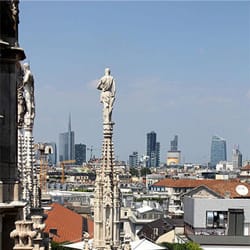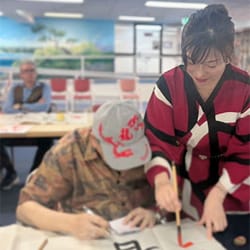I used to live in the States and that’s where I graduated.
In the United States, the graduation ceremony, commonly called “Commencement,” is a formal yet emotional event filled with shared meaning. Students wear a toga and a typical square hat called a “mortarboard”, to which a tassel is attached. The color of the toga is usually black, while stoles, cords and details can vary depending on the academic discipline, honors received or membership in honorary clubs and societies. For example, colored stoles or special cords are used to indicate academic merit or participation in student and honorary organizations. Many decorate their mortarboard with motivational phrases, dedications or creative drawings, thus personalizing an object symbolic of their university experience.
The ceremony opens with official speeches, usually given by the president of the University and a guest of honor, called the “commencement speaker”, often a prominent public figure, a famous former student or a leader in the political, cultural or economic world.
A much-anticipated moment is the changing of the tassel: before the proclamation, the tassel is placed on the right side of the hat and is moved to the left side once the student has officially graduated, to symbolize the change of status. Immediately after, we often witness the traditional throwing of the cap in the air, a collective gesture that represents the joy and celebration of the milestone achieved.
The graduation ceremony in the United States is therefore a highly symbolic and deeply felt moment, which celebrates not only the academic milestone, but also the transition to a new phase of life.
In Italy, however, graduation is not just an academic achievement, but a true rite of passage that combines the solemnity of the official proclamation with the joviality of student traditions handed down over the centuries. The ceremony begins with the official proclamation, which takes place in formal and intimate settings, usually the classrooms at the University. The candidates discuss their thesis in front of a commission, and at the end of the oral exam the solemn formula is pronounced that proclaims the candidate a doctorate, accompanied by the final grade. As soon as they leave the classroom, the new graduates are welcomed by friends and family with chants, applause, confetti and uncorked bottles. But the real distinctive moment of graduation is the ritual of the laurel crown, often decorated with colored ribbons, small objects and ironic dedications, which the student wears as a classic symbol of knowledge, adulthood and victory.
The use of laurel as a symbol of glory is very ancient: for the Romans, the laurel plant was sacred and consecrated to Apollo, god of all the arts, considered an emblem of wisdom, intelligence and honor to whom even every form of victory was dedicated.
The modern word for degree (Laurea) comes from the Latin term for laurel indeed. Decorating the head of the new graduate with the laurel crown therefore symbolizes the coronation of the wisdom acquired during his studies.

Flower shops in Italy customize laurel crowns for graduations
In Genoa, graduation is a moment that combines the authority of a thousand-year-old tradition with the vitality of the student world.
A distinctive tradition is the creation of the crossword puzzle, a large poster hand-drawn by friends, classmates and relatives of the graduate, in which the definitions and solutions concern the student’s personal or university life with funny anecdotes that involve those moments. The embarrassing collage is also very common: where the most compromising photos of the graduate are printed and posted around the place of the discussion or along the main streets of the city.
It is not uncommon to see new graduates walking in the city center dressed in absurd costumes, among confetti, bottles of sparkling wine, flour and other ‘ingredients’ used for jokes, accompanied by funky chants.
Every graduation has therefore its own story: made of sleepless nights, personal challenges, unexpected discoveries, but also of friendships, laughter and moments that will remain forever etched. Whether it is a solemn ceremony or an impromptu party in the square, every graduate brings with them a unique baggage of emotions and meanings. Traditions vary from country to country, but everywhere graduation day represents a milestone that deserves to be celebrated.






























































